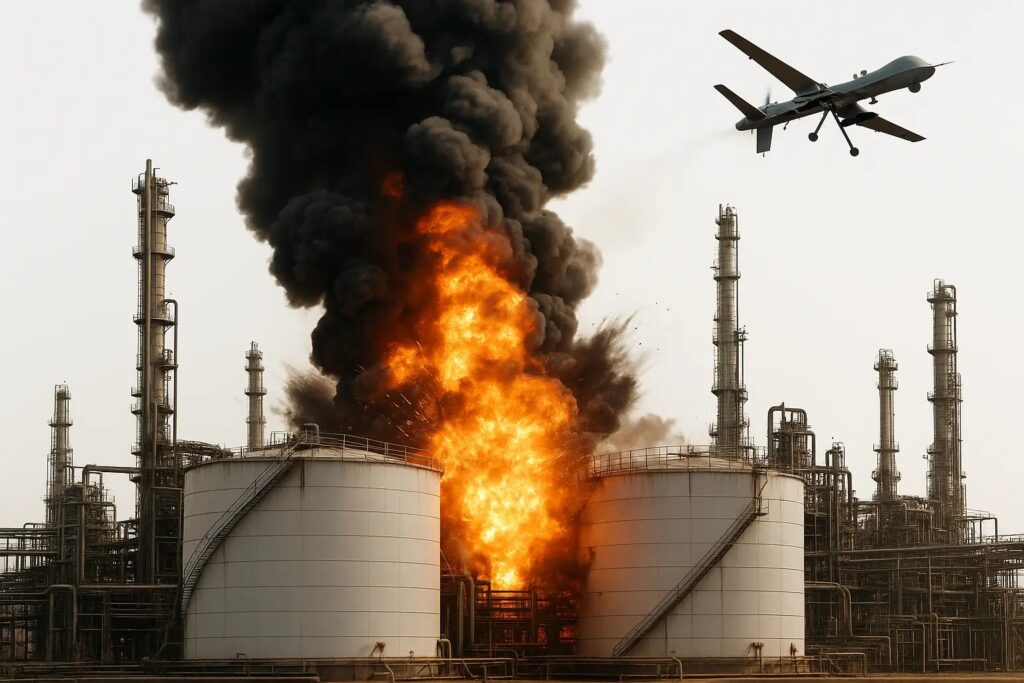Introduction: Why Iran’s Energy Sites Matter
Iran isn’t just rich in oil and gas—it’s built its economy on these natural resources. From fueling power plants to exporting crude oil to China, Syria, and Venezuela, energy is Iran’s financial backbone. But as tensions with Israel rise, this lifeline is now under direct attack.
Overview: The Strategic Importance of Iran’s Oil and Gas Network
Iran holds the second-largest natural gas reserves in the world and is one of the top players in global oil production. According to the US Energy Information Administration (EIA), Iran exported 1.29 million barrels of crude oil per day in 2023. These exports aren’t just numbers—they represent leverage, influence, and survival in a sanctions-heavy world.
Key Oil and Gas Sites Targeted by Israel
Israel’s recent strikes weren’t random—they were laser-focused on Iran’s energy infrastructure. Here’s a breakdown of the most critical sites affected:
1. Isfahan Oil Refinery
- Location: Iran’s Oil Lifelines Under FireCentral Iran
- Importance: Supplies fuel domestically and is essential for petrochemical production
- Damage: Significant explosions reported, disrupting operations
2. Abadan Refinery (Near the Iraqi Border)
- Location: Southwestern Iran, Khuzestan Province
- Importance: One of the oldest refineries in the Middle East, pivotal for domestic and export use
- Attack Details: Israeli drones allegedly targeted storage tanks, causing massive fires
3. Bandar Abbas Terminal and Gas Infrastructure
- Location: Southern Iran, along the Strait of Hormuz
- Importance: Key export hub for oil and liquefied petroleum gas (LPG)
- Current Status: Operations slowed, export activities paused temporarily
4. South Pars/North Dome Gas Field
- Location: Shared offshore with Qatar
- Importance: Largest gas field in the world
- Strategic Vulnerability: Though not yet hit, this site is now under heavy military watch
The Global Ripple Effect: Oil Markets React
Within hours of the strikes, Brent crude oil prices surged by over 3%, reflecting fears of sustained regional conflict. With global dependence on Gulf oil still high, any prolonged disruption in Iran’s energy exports could destabilize markets from Asia to Europe.
What This Means for Iran’s Economy
Iran’s economy is already under stress from U.S. sanctions, high inflation, and a weakening currency. Hitting oil and gas infrastructure is more than a military tactic—it’s an economic chokehold. Experts fear these attacks could reduce daily oil exports by over 25% if the strikes continue.
Why Is Israel Targeting These Sites?
From Israel’s perspective, Iran’s energy infrastructure doubles as a strategic and symbolic target. The Iranian Revolutionary Guard Corps (IRGC) has been linked to using energy revenues to fund groups such as Hezbollah and Hamas. By disrupting this funding stream, Israel hopes to weaken Iran’s regional influence.
Iran’s Response: Bolstering Defenses
Iran has begun reinforcing defenses around key refineries, gas terminals, and offshore rigs. Anti-aircraft systems have been deployed, and military units are now stationed near vulnerable pipelines and oil fields. Tehran has warned that further attacks will be met with “direct retaliation”.
Quick Stats at a Glance
Key Metric Figure
Daily Oil Exports (2023) 1.29 million barrels
Natural Gas Reserves 32 trillion cubic meters
Major Oil Buyers China, Syria, Venezuela
Hit Refineries Isfahan, Abadan, Bandar Abbas
Final Thoughts: Energy War in the Middle East?
This isn’t just about oil—it’s about dominance, deterrence, and control. As Israel and Iran intensify their shadow war, the battlefield is no longer just the desert or cyberspace—it’s pipelines, ports, and power plants.
And in a world still recovering from energy shocks and economic instability, this oil war could be the matchstick in a barrel of geopolitical fuel.

